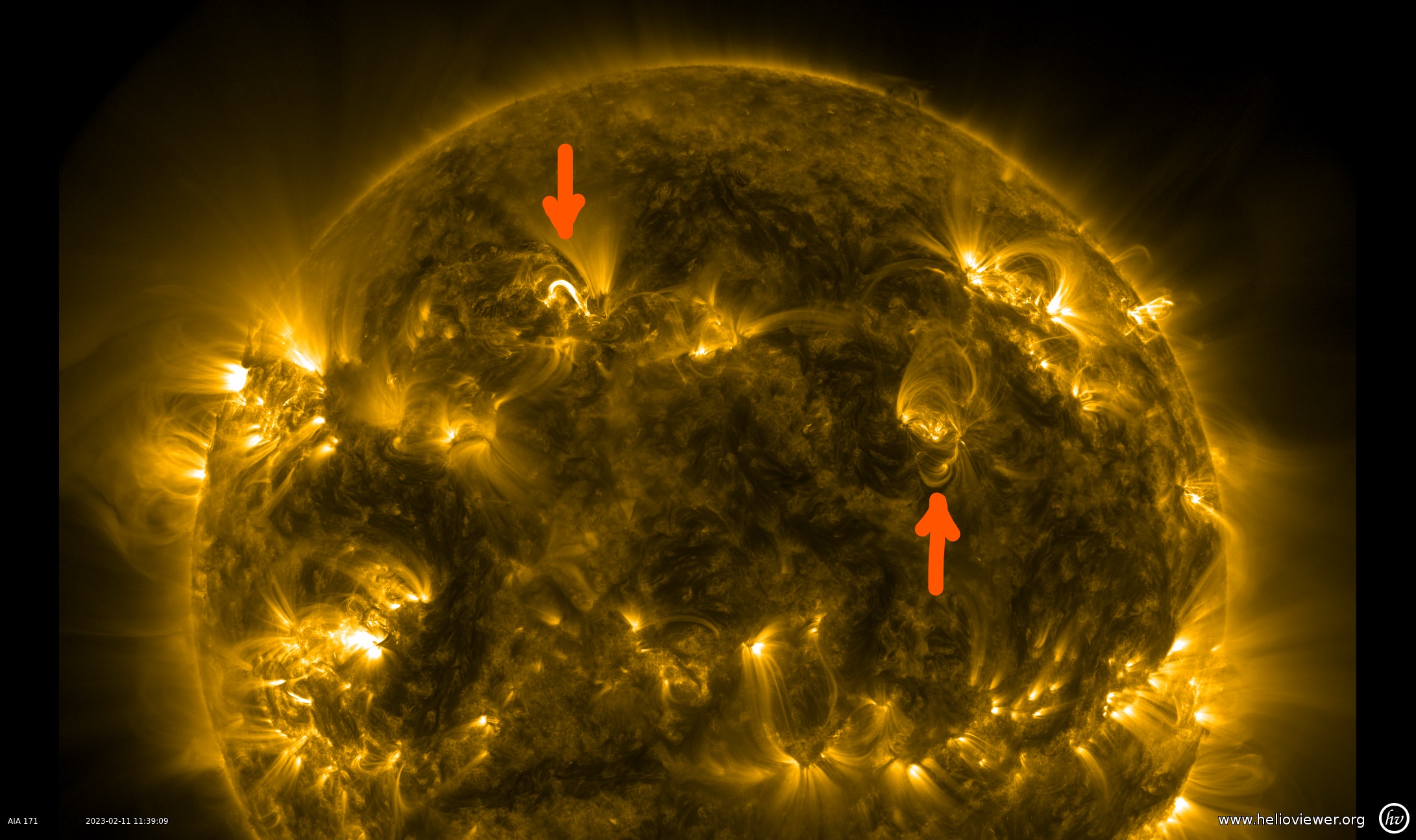Space Weather Alert - 13th February 2023
What Has Happened?
A combination of events on the Sun over the past weekend is expected to increase geomagnetic activity over the next 24-48 hours.
There were seven M-class and one X-class flares, and 11 Coronal Mass Ejections (CME) leaving the Sun on Saturday, 11th Feb. Two of the CMEs appear to have an Earth-directed component. The first one was caused by an erupting solar filament at the NE quadrant, close to AR3216. The second CME was most likely to be associated with AR3214 located in the NW. Individually, none of these CMEs might be expected to greatly increase geomagnetic activity, however, their anticipated arrivals close together in the next 48 hours could mean a good chance of geomagnetic storm periods occurring later today and into tomorrow.
Assuming clear dark skies, there is an increased chance of seeing the aurora in the hours following the arrival of the CMEs, particularly at high latitudes in the North of Scotland.
Sign-up to receive Geomagnetic Disturbance Alert emails.
Follow us on Twitter:
Follow @BGSauroraAlert for more occasional aurora alerts.
Follow @BGSspaceWeather for daily space weather forecasts.
Glossary
- BGS
- The British Geological Survey is one of the Natural Environment Research Council's Research Centres.
- CME or Coronal Mass Ejection
- The eruption of a portion of the outer atmosphere of the Sun into space, caused by rapid changes in its magnetic field. Often occurs along with a solar flare.
- Solar Wind
- The ever-present expansion of the Sun’s hot outer atmosphere into the solar system, which carries space weather within it.
- Sunspot/Active Region
- A region of intense magnetic field in the Sun's visible outer atmosphere often associated with flares and CMEs.


